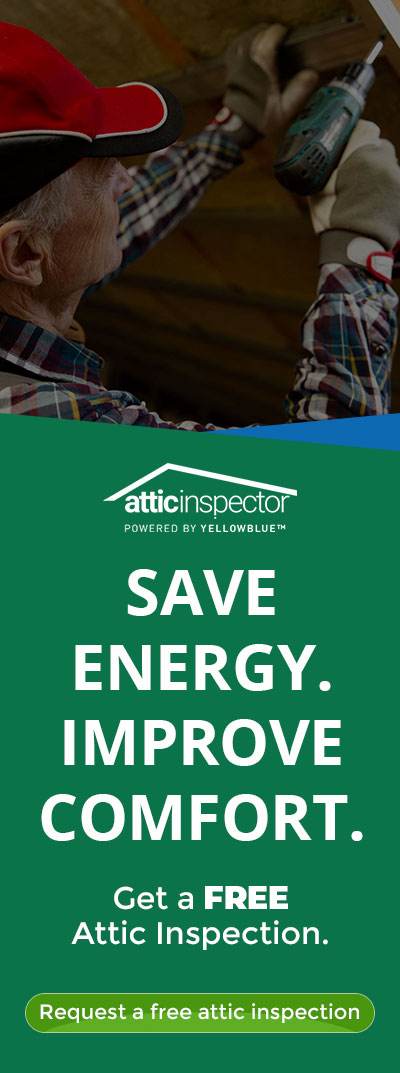One of the most important yet most forgotten aspects of living healthy in your home is taking care of your air quality.
There are many causes of indoor air pollution, and thankfully a fair amount of ways to combat it.
Why Indoor Air Pollution is Dangerous
Indoor air pollution can have immediate and long-term effects on those living in a home. As with most contaminants, the symptoms start small. Irritations of the eyes, nose, throat, or excessive headaches and dizziness — with no other identifiable culprit — are typical indications that there is a pollutant in your home.
The symptoms are often mistaken for cold symptoms, so if someone in your home is having what appears to be an extended sickness, it could be the result of indoor air pollution. The key distinguisher is whether symptoms appear near specific areas of the house.
Each individual can react to a pollutant differently, but as with most medical issues, children and older adults are often more susceptible to harm. Residents with preexisting conditions, particularly respiratory ones, should be wary of indoor air pollution.
The worst effects of indoor air pollution are seen in the long-term. Over increased exposure, indoor air pollution can lead to respiratory and heart conditions, as well as some forms of cancer. Thankfully, when caught early enough, the effects can be halted and prevented. But you need to know where to look.
Major Causes of Indoor Air Pollution
These are the most common causes of indoor air pollution. If you’re looking to check the quality of the air in your home, be sure to check out our breakdown of the best indoor air quality monitors after you’re done this article.
Radon and Asbestos
These two are the most common causes of indoor air pollution, arguably because they are not as familiar as some of the other items on this list. It’s not as obvious how to rid your home of radon or asbestos as it is to take out a rug.
Radon is an invisible gas that can be found in certain home foundations. It originates in the broken down soil and rock underneath your home; as the uranium in these materials deteriorates, radon is released. The gas is linked to lung cancer and is the number one cause of the disease outside of smoking. Asbestos was a commonly used building material for construction projects prior to 1980, and might be more recognizable to a homeowner. The material was primarily used in siding, shingles, insulation, and joint compounds.
Both of these causes of indoor air pollution should be handled by a professional. If you’re concerned about radon in your home, you can purchase a radon detector to inspect your home before contacting a licensed contractor. For asbestos, there aren’t any trustworthy ways to detect the material by yourself, so contact an accredited asbestos professional to inspect the property.
Furniture
Depending on the manufacturer of your furniture, you could be exposed to some major causes of indoor air pollution. Upholstered materials, cabinets, desks, and tables — depending on how they’re made — have all been found to “off-gas” volatile organic compounds (VOCs). This means they’re subtly releasing dangerous chemicals used to finish and produce them into the air.
Because of this, it’s important to do research before purchasing any new furniture for your home. When shopping around, keep an eye out for furniture that is air-quality certified. These certifications guarantee that the product has been manufactured to achieve the lowest amount of VOC emissions possible. You can also air out your new furniture before you bring it into the home, as the first week after unwrapping is normally when the most VOCs are released.
Carpets, rugs, and blankets
Some of the most common causes of indoor air pollution are carpets, rugs, and blankets. These materials trap dust mites, pet dander, mold spores, and other hazardous pollutants. The pollutants are re-released when you walk on them or move them around, making them a constant contributor to your air quality.
It’s also possible the chemicals used in newer carpets and carpet pads contain further pollutants as well as unwanted odors.
Thorough vacuuming is the best response to combat these causes of indoor air pollution. Ideally, investing in hardwood floors and smaller scale rugs would remove the threat entirely, but for those seeking a less drastic solution, cleaning is always the way to go.
CFL lights
Since the mainstream switch away from incandescent bulbs, compact fluorescent bulbs (CFL) are some of the most commonly used light bulbs in the country. Unfortunately for homeowners, they can emit a toxic chemical if they happen to break or shatter. A few milligrams of mercury is used in these widely distributed commodities
The best solution to CFL lights is to entirely replace the structure as a whole. CFL lights are already going out of fashion, and there are plenty of valuable alternatives. LED indoor lights can save homeowners time, money, and energy while also making a smaller impact on the environment. You can also consider indoor solar lights, which harness energy from the sun to light your home. Both of these alternatives are better for the environment outside and inside your home than sticking with CFL lights.
Mold
Mold can be a big cause of indoor air pollution. Any spaces in and around your home that are water-prone are susceptible to mold growth. While more common on the exterior of your home, the wet patches under your sink, in your bathroom, or near boilers are equally as prone.
Molds produce allergens, irritants, and in some cases, potentially toxic substances. While molds aren’t going to be as dangerous to your household as radon or asbestos, they can trigger allergic reactions, coughing, wheezing, and other respiratory problems.
Strangely, there is always going to be a little bit of mold in your home no matter what you do; it’s a substance found in some form nearly everywhere. Large mold infestations can usually be detected by sight or by smell, and can then be removed from the household. However, the best methods for reducing the amount of mold in your home are preventative methods. Secure all the locations around your house that are prone to water exposure so puddles and wet patches cannot form.
What You Can Do
If you’re seeking a way to purify the air in your home and make it consistently excellent to live in, contact us today to discuss the installation of the RENUAIRE home purifier.




